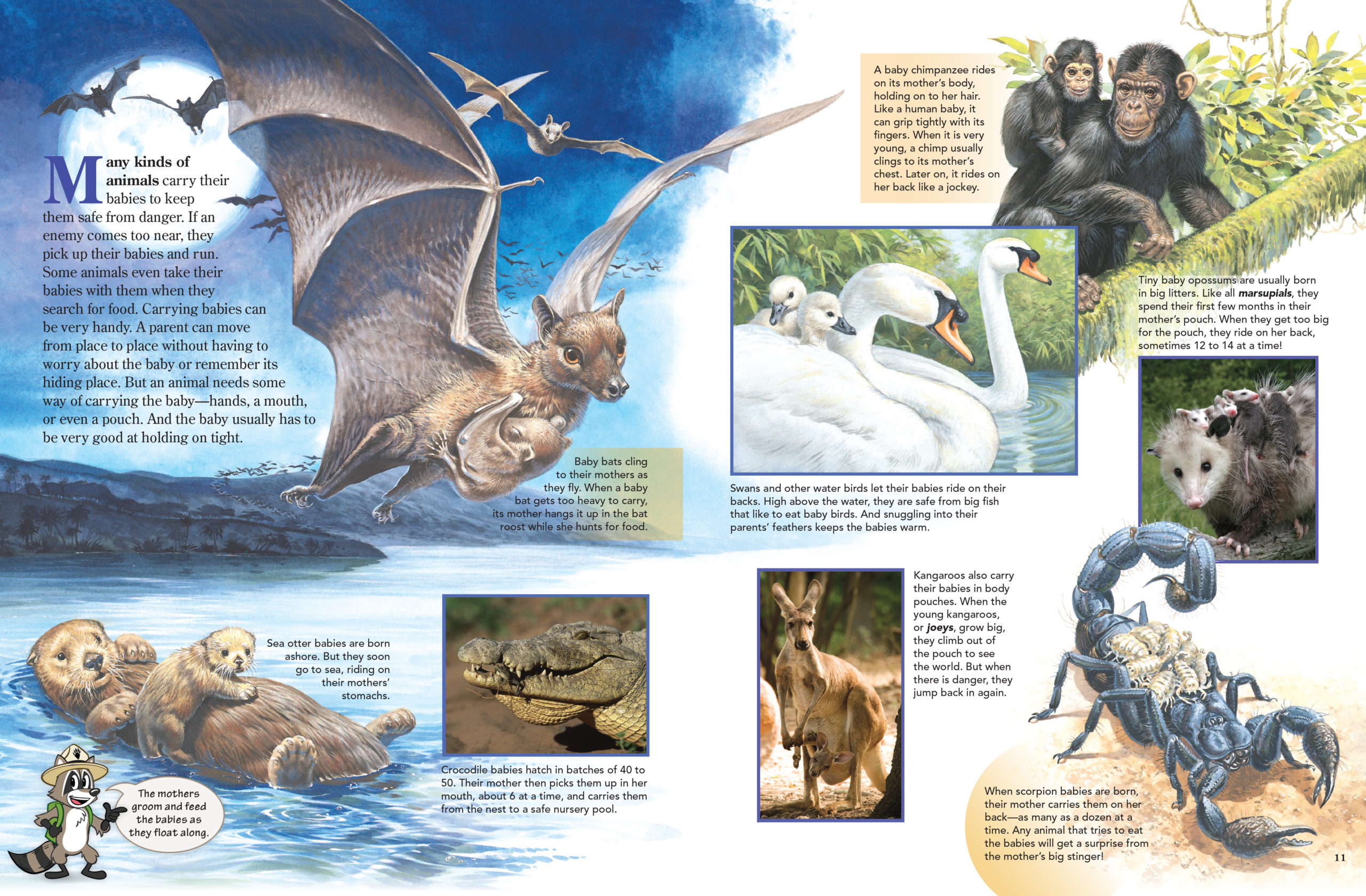
Many Animals Carry Their Babies to Keep Them Safe
ByMany kinds of animals carry their babies to keep them safe from danger. If an enemy comes too near, they pick up their babies and run. Some animals even take their babies with them when they search for food. Carrying babies can be very handy. A parent can move from place to place without having to worry about the baby or remember its hiding place. But an animal needs some way of carrying the baby—hands, a mouth, or even a pouch. And the baby usually has to be very good at holding on tight.
Baby bats cling to their mothers as they fly. When a baby bat gets too heavy to carry, its mother hangs it up in the bat roost while she hunts for food.
Sea otter babies are born ashore. But they soon go to sea, riding on their mothers’ stomachs. The mothers groom and feed the babies as they float along.
Crocodile babies hatch in batches of 40 to 50. Their mother then picks them up in her mouth, about 6 at a time, and carries them from the nest to a safe nursery pool.
A baby chimpanzee rides on its mother’s body, holding on to her hair. Like a human baby, it can grip tightly with its fingers. When it is very young, a chimp usually clings to its mother’s chest. Later on, it rides on her back like a jockey.
Tiny baby opossums are usually born in big litters. Like all marsupials, they spend their first few months in their mother’s pouch. When they get too big for the pouch, they ride on her back, sometimes 12 to 14 at a time!
Swans and other water birds let their babies ride on their backs. High above the water, they are safe from big fish that like to eat baby birds. And snuggling into their parents’ feathers keeps the babies warm.
 Kangaroos also carry their babies in body pouches. When the young kangaroos, or joeys, grow big, they climb out of the pouch to see the world. But when there is danger, they jump back in again.
Kangaroos also carry their babies in body pouches. When the young kangaroos, or joeys, grow big, they climb out of the pouch to see the world. But when there is danger, they jump back in again.
When scorpion babies are born, their mother carries them on her back—as many as a dozen at a time. Any animal that tries to eat the babies will get a surprise from the mother’s big stinger!

